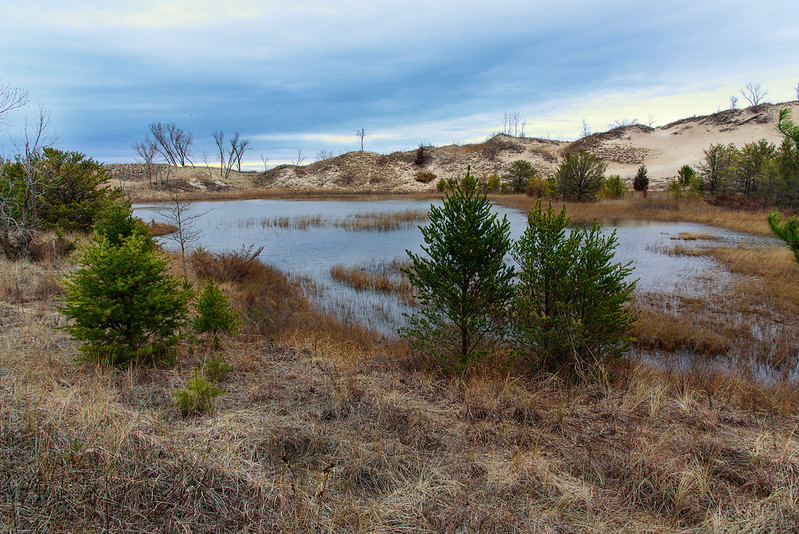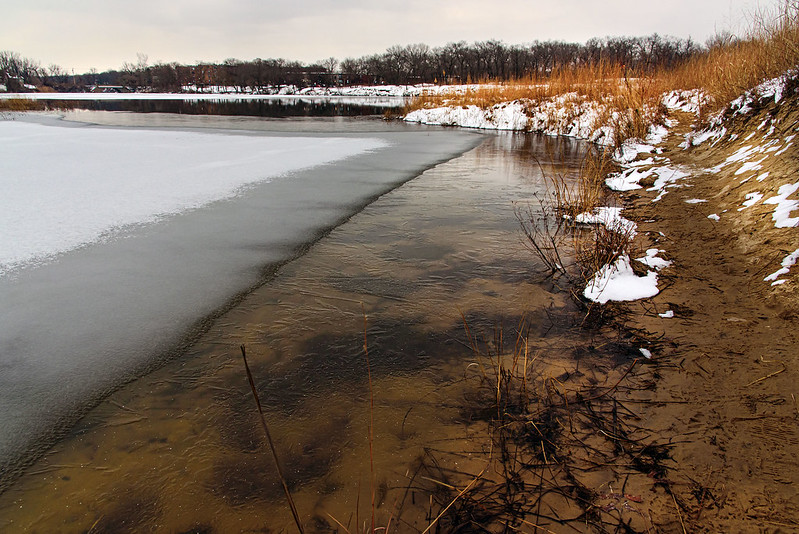
Hiking through the dunes can be quite challenging if the trails are soft sand and up steep hills, but imagine walking through areas with no trails. The rolling sand and multitude of grasses and shrubs seen here, gives an indication of the terrain one would need to cross if wandering off trail. While certainly not the most difficult obstacles, encountering these one after another for miles would certainly wear on the legs.
This vantage point is from a trail, because the Indiana Dunes National Park does not allow off-trial hiking, but I have decided to "bushwhack" in other parks that allow it. It's a lot more difficult that it appears, especially when doing so in the wooded dunes. Downed trees, branches, and thorny vines are everywhere, either blocking your way, or grabbing your clothing, stopping you every 10 feet or so. Add the soft sand and hills, and you have a real workout on your hands.
I remember attempting to follow a creek from a lake to a road I knew was 1/2 mile away. Because of the steep bank along the creek, I had to climb up to the top of the dunes, and follow the creek from the top of the hills all the way back to the road. The obstacles I spoke of earlier prevented me from making a quick trip - in fact, the 1/2 mile took me almost an hour, and cost me a jacket and a pair of pants because they were both ripped by the thorny vines that lined the forest floor.
While I actually prefer blazing my own trails in search of things relatively few bother to find, I do enjoy the maintained trails and paths along the Indiana Dunes.






























